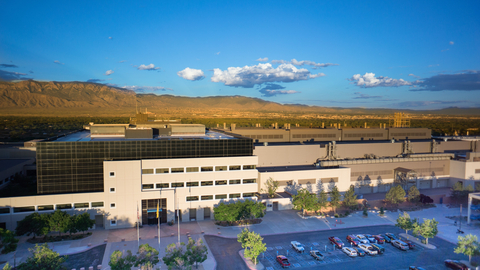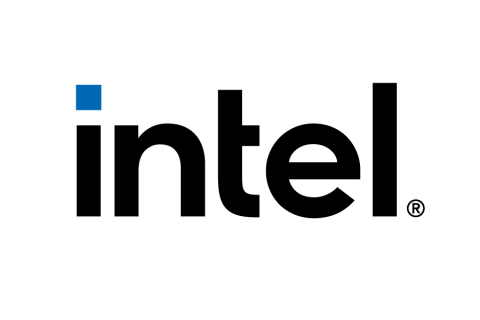SANTA CLARA, Calif.--(BUSINESS WIRE)--The following is an opinion editorial by Al Thompson, vice president of U.S.-Canada Government Affairs for Intel Corporation:
It’s been one year since President Biden signed the CHIPS and Science Act into law, launching the most significant industrial policy initiative in a generation. In addition to the much-discussed manufacturing boom the law incentivized, we also stand on the cusp of America’s next big innovation boom.
Powered by the promises of the CHIPS Act, Intel is doubling down on research and development (R&D) that will fuel new, leading-edge chip manufacturing facilities to power today’s advanced technologies and tomorrow’s transformative innovations. Intel is also investing in much-needed workforce development programs to ensure American workers have the necessary skills and talent to out-innovate the competition and meet the long-term demand for leading-edge semiconductors.
Every day, we see firsthand how Intel’s investments are putting America back on the path to manufacturing and technology leadership, while broadening access to opportunities and supporting the next generation of innovators.
Powering Advanced Technologies and Transformative Innovations
While it is becoming exponentially more challenging to keep pace with Moore's Law as the industry aspires to deliver 1 trillion transistors on a single device by 2030, Intel is executing on or ahead of schedule to deliver five process nodes in four years and return process technology leadership to the U.S. by 2025. And even with this progress, our industry must forge new partnerships with the government to maintain America’s technology leadership.
The CHIPS and Science Act established new semiconductor R&D programs, and as a member of the CHIPS Industrial Advisory Committee (IAC), Intel is working to make the National Semiconductor Technology Center (NSTC) and National Advanced Packaging Manufacturing Program (NAPMP) successful ventures. We urge the government to ensure that CHIPS R&D innovations created as a result of the NSTC and NAPMP lead to long-term manufacturing leadership.
Galvanizing Private-Sector Investments for Major Economic Impact
In just one year, the CHIPS and Science Act sparked more than $200 billion in private investments for U.S. semiconductor production, and more than 50 new semiconductor ecosystem projects have been announced across the U.S. Along with our ecosystem partners, Intel is helping put America back on the path to manufacturing and technological leadership, which is critical to our economic and national security.
In 2021, Intel announced more than $43.5 billion in new manufacturing investments across Arizona, New Mexico and Ohio to bolster U.S. chipmaking and R&D leadership. Since then, these investments have grown significantly, and they do not even account for our investments in domestic R&D or accelerated technology development.
Intel’s announced investments include:
- Expanding our operations in Arizona, where Intel has been for more than 40 years, from two to four leading-edge semiconductor factories that are estimated to cost $15 billion to $20 billion each.
- In New Mexico, Intel is investing at least $3.5 billion on equipment upgrades for advanced semiconductor packaging operations. We are currently hiring to fill 200 of the 700 new manufacturing technician positions directly tied to this expansion.
- Intel’s greenfield investment in two new leading-edge fabs in Ohio marks the single largest private-sector investment in the state's history. This “Silicon Heartland” will establish a new regional economic cluster for U.S. chipmaking and become an epicenter of leading-edge technology.
- In Oregon, Intel proposed a multibillion-dollar expansion and modernization of our facilities that will put the company on a path to regain process technology leadership and continue to advance Moore’s Law.
Creating the Next Generation of Talent
The success of the CHIPS and Science Act hinges on the ability to create a robust and diverse ecosystem of skilled semiconductor talent. At Intel, we're taking a comprehensive approach and working with government and academia to develop a diverse talent pipeline.
In addition to our significant investments in U.S. manufacturing capacity, Intel announced a $100 million investment last year to expand semiconductor education, research and workforce training opportunities across the nation. This includes a $50 million match for a total $100 million partnership with the National Science Foundation to expand opportunities in the United States.
It also includes a $50 million investment to fund the Intel Semiconductor Education and Research Program (SERP) for Ohio – a collaborative, multi-institution program designed to directly support our new operations in Ohio. Through this program, for example, Columbus State Community College has taken the lead on developing a one-year semiconductor technician certificate program that will launch in seven Ohio community colleges this fall term.
In Arizona and Oregon, we partnered with the local community colleges to launch a first-of-its-kind semiconductor technician Quick Start program with the Maricopa and Portland community college systems. This accelerated two-week program, led by Intel employees, provides hands-on learning to prepare students for rewarding careers as semiconductor technicians.
Looking Ahead – We Can’t Let Up
While the CHIPS and Science Act investments serve as a catalyst, the scale, scope and success of this once-in-a-generation industrial policy now require a whole-of-government approach.
The U.S. has made significant progress to deliver on the promises of the CHIPS Act, and Intel is proud to help drive forward the momentum of the CHIPS for America program. Time is of the essence – we can’t let up.
Al Thompson is vice president of U.S.-Canada Government Affairs for Intel Corporation.
About Intel
Intel (Nasdaq: INTC) is an industry leader, creating world-changing technology that enables global progress and enriches lives. Inspired by Moore’s Law, we continuously work to advance the design and manufacturing of semiconductors to help address our customers’ greatest challenges. By embedding intelligence in the cloud, network, edge and every kind of computing device, we unleash the potential of data to transform business and society for the better. To learn more about Intel’s innovations, go to newsroom.intel.com and intel.com.
© Intel Corporation. Intel, the Intel logo and other Intel marks are trademarks of Intel Corporation or its subsidiaries. Other names and brands may be claimed as the property of others.






